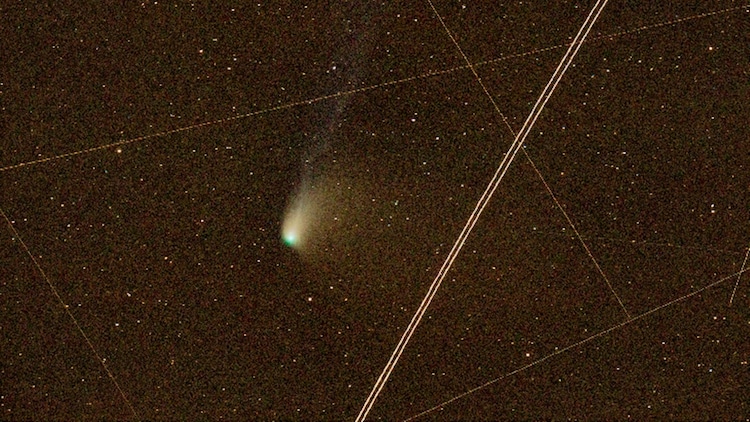
Satellite constellations distort night sky views. This picture shows how
The rapid proliferation of Starlink and other satellite internet constellations has had a significant impact on astronomical observations.

In Short
- The sheer number of satellites being launched is causing serious problems
- The issue goes beyond just photobombing astronomical images
- The satellites are also causing radio interference
Astronomers around the world have regularly expressed growing concern over the threat that satellite constellations pose to their field of study, and the evidence suggests their worries are well-founded.
The rapid proliferation of Starlink and other satellite internet constellations has had a significant impact on astronomical observations.
A striking example is a one-minute exposure of Comet 12/Pons-Brooks taken by photographer Ian Griffin in New Zealand, which shows the comet's image obscured by bright streaks of Starlink satellites crossing the frame.
"Words can't describe the destruction Starlink is causing the nocturnal environment, but this single one-minute exposure might," said Griffin in a report in spaceweather.com. "I hope everyone is enjoying their satellite broadband."
While the convenience of Starlink internet is undeniable, especially in remote areas, the sheer number of satellites being launched is causing serious problems for astronomers.
According to the International Astronomical Union (IAU), the current number of Starlink-like satellites, around 5,800, could grow to more than 500,000 in the coming years as SpaceX and other companies expand their constellations.
The issue goes beyond just photobombing astronomical images. The satellites are also causing radio interference with sensitive astronomical instruments, and their presence in low-Earth orbit is contributing to increased light pollution that makes it harder to observe the night sky.
"As more satellites are deployed into low-Earth orbit, nearly all facets of optical astronomy may be negatively affected," warned a report by the US Government Accountability Office.
NASA has also expressed concerns about the threat posed by satellite constellations, warning of increased risks of orbital collisions and potential interference with its own science satellites.
Astronomers are not exaggerating the threat. The evidence clearly shows that the rapid growth of satellite internet networks is having a significant and potentially devastating impact on their ability to study the cosmos.
While the benefits of global connectivity are undeniable, the astronomical community is calling for stricter regulations and mitigation measures to protect the night sky.
